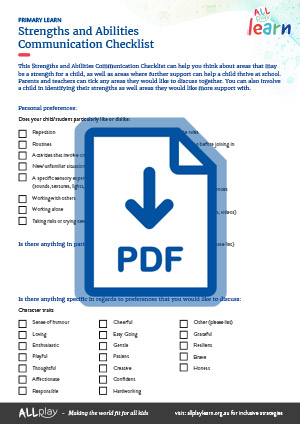
Sensory
On this page:

About sensory functioning
Sensory functioning describes how the body responds to sounds, textures, lights, smells, pain, temperature and other stimuli or information in the environment. Some children can have reduced sensory awareness, such as children who are Deaf/deaf or hard of hearing, or children who are blind or low vision. Other children may find some sensory input distracting or distressing such as those with autism. Some children may not like loud noises (e.g. they cover their ears or become upset in large crowds or when you raise your voice), while others may be sensitive to certain textures (e.g. they don’t like some fabrics, tags on clothing, or types of food, sand) or smells (e.g. perfumes). Particular types of lighting or another person maintaining eye contact can also be distressing for some children. Some children can also show an interest in sensory stimuli or find it comforting. For example, they might sniff toys or objects, or be fascinated by lights or movement. Some children can show under-responsiveness to some types of sensory information, like pain or temperature. This can increase their risk of getting hurt or being ill and others not being aware of it. All children will differ in the type and severity of sensory concerns they have. Every child is different.

Evidence-based strategies
Predictability and a consistent routine can help some children who find sensory input challenging.

Best practice tips
Be aware of children’s sensory needs
Provide choices
Consider clothing
Provide a quiet area
Allow the use of noise-reducing headphones

Other considerations

Relevant resources
Visit our Resources page for a range of resources that can help to create inclusive education environments for children with disabilities and developmental challenges. A particularly relevant resource for supporting children with managing sensory input is:

